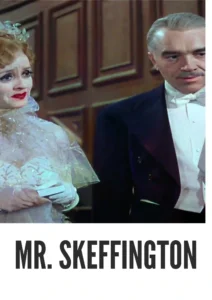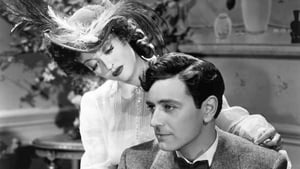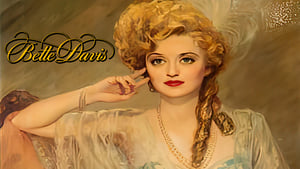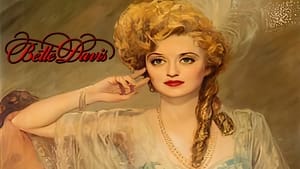Video Sources 0 Views

Synopsis
Immerse yourself in the opulent world of 1940s high society with Mr. Skeffington, a sweeping romantic drama from 1944, now exquisitely colorized for a viewing experience that heightens its emotional depth. Starring the incomparable Bette Davis, this film explores themes of beauty, vanity, and the sacrifices made in the pursuit of love and admiration. Perfect for fans of classic Hollywood and those who appreciate compelling character studies, this HD download offers a fresh perspective on a timeless story of love and loss. Some know this movie as A pretty woman.
Mr. Skeffington tells the story of Fanny Trellis (Bette Davis), a stunningly beautiful but narcissistic woman who marries Job Skeffington (Claude Rains), a wealthy financier, to save her brother Trippy from legal trouble. Despite Job’s deep love for her, Fanny remains self-absorbed, prioritizing her beauty and social life above all else.As the years pass, Fanny’s beauty begins to fade, and she faces the consequences of her shallow choices. Job, now blind and returning from Europe after the war, grants Fanny a divorce. With her beauty gone and having alienated those around her, Fanny is forced to confront her own vanity and the true meaning of love and sacrifice. The film is a poignant exploration of the destructive nature of narcissism and the possibility of redemption. Mr. Skeffington portrays a complex character whose journey resonates with audiences even today.
The film boasts a stellar cast of actors who bring these complex characters to life:
- Bette Davis as Fanny Trellis Skeffington
- Claude Rains as Job Skeffington
- Walter Abel as George Trellis
- Richard Waring as Trippy Trellis
- George Coulouris as Dr. Byles
- Peter Whitney as Chester Forbish
Mr. Skeffington is primarily a romantic drama, but it also incorporates elements of melodrama and social commentary. The film explores themes of love, marriage, beauty, aging, and the consequences of vanity. Its complex characters and emotional depth make it a compelling and thought-provoking film.
Released in 1944, during the height of World War II, Mr. Skeffington reflects the changing roles of women in society. While Fanny’s character embodies traditional ideals of beauty and femininity, the film also critiques the limitations placed on women during this era. The movie was produced during a time when Hollywood studios churned out melodramas aimed at female audiences, offering escapism and exploring complex social issues. Mr. Skeffington, with its strong female lead and exploration of personal transformation, remains a significant film of its time.
This colorized version of Mr. Skeffington has been meticulously restored using state-of-the-art digital techniques, enhancing the visual impact while preserving the film’s original emotional power. The colorization process involved careful analysis of the grayscale tones in the original black and white footage, adding appropriate colors to each scene to enhance the costumes, sets, and actors’ features. Advanced algorithms were used for color palette selection and image enhancement, resulting in a vibrant and engaging viewing experience. This painstaking process brings a new dimension to the film’s characters and settings, making the story even more accessible to contemporary viewers. The colorization breathes new life into the classic, attracting a broader audience and ensuring its lasting appeal.
- : Vincent Sherman
- : Julius J. Epstein, Philip G. Epstein
- : the novel by Elizabeth von Arnim
- : Ernest Haller
- : Ralph Dawson
- : Warner Bros.
- : Warner Bros.
- : 146 minutes
- : MP4
- : HD (1080p)
- : Compatible with most devices, including smartphones, tablets, computers, and smart TVs.
Mr. Skeffington (1944) received mixed reviews upon its initial release, with some critics praising Bette Davis’s performance while others found the film overly melodramatic. However, the film has since been re-evaluated and is now considered a classic of the genre. Davis received an Academy Award nomination for her performance, and the film was a box office success. It remains a powerful and moving exploration of love, loss, and redemption.
- : What is Mr. Skeffington about?
- A: Mr. Skeffington is a romantic drama about a beautiful but narcissistic woman who must face the consequences of her choices as she ages.
- : Is Mr. Skeffington (1944) a well-known Bette Davis film?
- A: Yes, Mr. Skeffington is one of Bette Davis’s most iconic roles, showcasing her talent for portraying complex and flawed characters.
- : Is this version of Mr. Skeffington colorized?
- A: Yes, this version has been professionally colorized to enhance the viewing experience.
- : What makes Mr. Skeffington interesting for classic film fans?
- A: Mr. Skeffington offers a compelling exploration of themes of love, beauty, and aging, with a standout performance by Bette Davis.
- : What is the download format?
- A: The download format is MP4, which is compatible with most devices.
- : What resolution is the download?
- A: The resolution is HD (1080p), providing a high-quality viewing experience.
Watch Mr. Skeffington Today!















